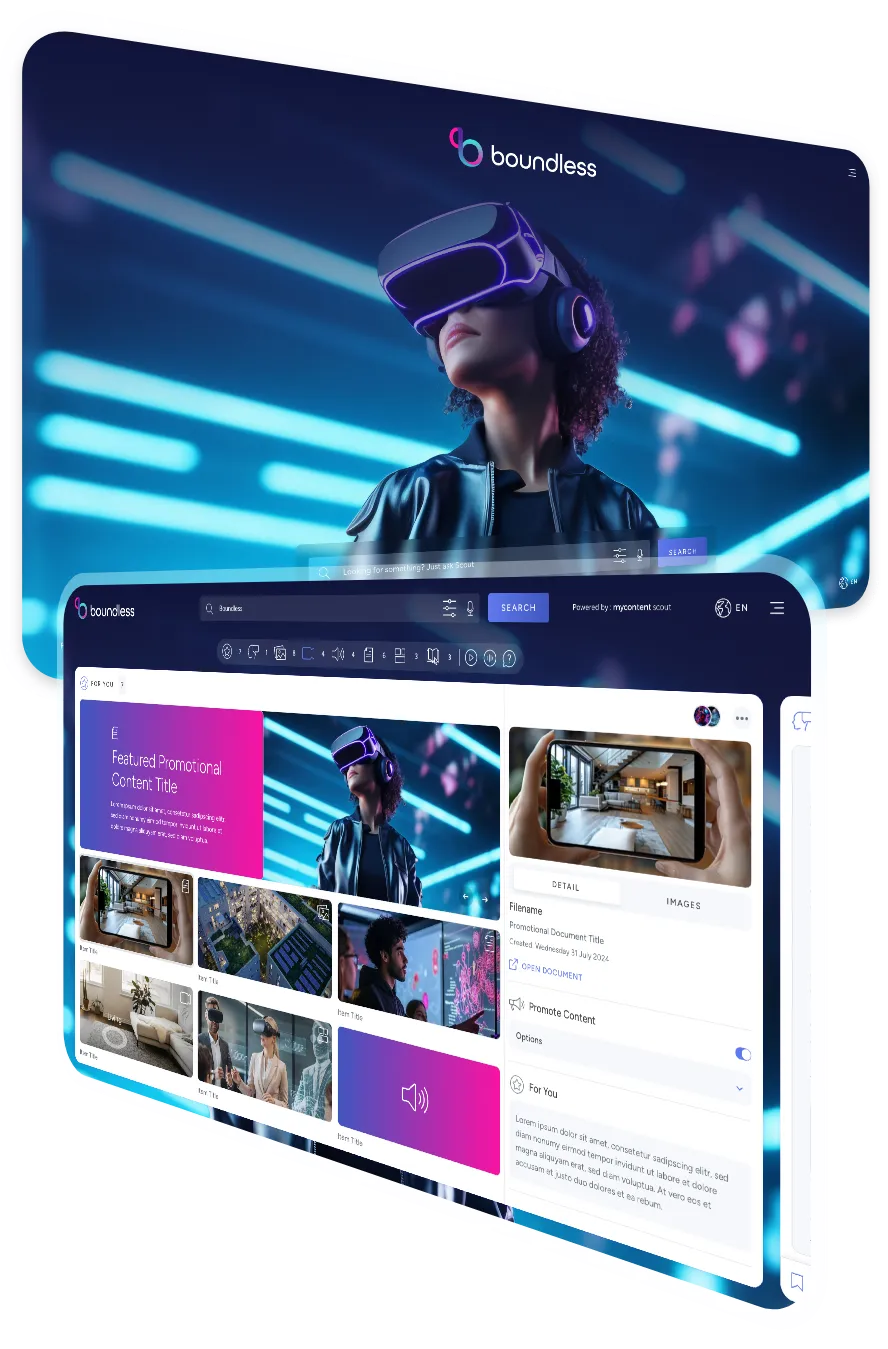
Your company's intranet was supposed to be the solution. That central repository where everything lives, where employees could find what they need, when they need it. Yet here we are, years later, watching teams waste hours hunting through folders, scrolling through SharePoint libraries, and still asking colleagues where to find that one crucial document.
Traditional intranets and document portals have become digital filing cabinets: static, disconnected, and fundamentally incompatible with how modern knowledge work actually happens. The next generation of workplace technology isn't about better organisation. It's about unlocking organisational knowledge by providing answers to users' questions at the point of need.

The fundamental flaw of traditional enterprise intranets isn't that they're poorly designed. It's that they were built for a different era. They assume employees know exactly what they're looking for, where it lives, and what search terms will retrieve it.
In reality, knowledge work is messy. You don't always know the right question to ask. You don't remember whether that presentation was filed under 'Marketing' or 'Sales' or 'Q3 Planning.' You can't recall if the document you need is a PDF, a slide deck, or a video recording from last month's all-hands meeting.
Intranets require precision. They demand that users adapt to how it was designed and structured and its logic rather than the system adapting to yours. According to research from McKinsey, the average information worker still spends nearly 20% of the workweek searching for information. That's one entire day per week lost to navigation rather than execution.
Intranet often compounds the problem by creating silos within silos. Employees become cartographers, maintaining mental maps of where different types of information within the labyrinth of information live rather than focusing on the work itself.
The cost isn't just frustration. It's opportunity. When knowledge remains fragmented and inaccessible, decisions get made with incomplete information. Teams duplicate work that already exists elsewhere. New employees spend months learning through trial and error what should have been instantly available to them.
If legacy portals were about search and retrieval, the next frontier is about understanding. AI driven knowledge platforms bring some crucial differences. They can ingest multiple content types (documents, videos, audio, dashboards), understand queries in everyday language, and deliver answers not just links.
Here are the core features that distinguish an AI powered knowledge platform:

Turning to our featured platform, MyContentScout describes itself as “an AI knowledge platform designed to enhance the way users find and get answers from an organisation's various content at once.” Its features list confirms support for documents, videos, audio files, images, e-learning modules and dashboards.
By contrast to a standard intranet, an AI-search platform is not simply about “finding the document”, but “finding the answer” and surfacing the context around it. This shifts knowledge management from a storage problem to a true productivity enabler: the right insight, at the right time, for the right person.
Consider how different teams experience this transformation.
A new marketing coordinator joins the company. Rather than spending weeks learning the brand guidelines, campaign approval processes, and asset libraries through osmosis and fragmented conversations, she asks MyContentScout: "What's our brand voice for social media?" Within seconds, she receives the relevant style guide, examples from successful campaigns, and links to approved templates. What would have been days of scattered learning becomes minutes of focused understanding.
An HR manager needs to respond to an employee question about parental leave policies in the Madrid office. The official policy is in English, supplementary guidance exists in Spanish, and relevant legal updates were discussed in a recorded leadership meeting three months ago. MyContentScout surfaces all these content sources, providing the complete answer from the best matched source. What would have required searching multiple systems and consulting various colleagues becomes a single, comprehensive response.
These aren't hypothetical scenarios. They're the daily reality when knowledge management platforms replace legacy intranets that are fragmented document repositories with intelligent, knowledge platforms.

The transition from traditional intranets to AI-powered knowledge platforms isn't about abandoning existing content. It's about making that content genuinely useful.
Knowledge platforms like MyContentScout allows you to curate your content or integrate with your existing ecosystem. Your SharePoint libraries, Google Drive folders, One Drive folders remain where they are. The platform creates a unified layer that makes all this disparate content and knowledge available through a single interface. Employees don't need to remember where to find information. They simply ask their question, and MyContentScout will provide the answer.
Identity and access management integration ensures that this unified access respects existing permissions. If an employee doesn't have rights to view certain HR documents, those won't appear in their search results. Security policies remain intact whilst accessibility dramatically improves.
The platform also provides visibility into how your organisation uses knowledge. Which documents get accessed most frequently? Where are the gaps in existing content? What questions do employees ask that current materials don't adequately address? This intelligence helps organisations prioritise content creation and identify areas where knowledge capture would deliver the highest value.
Beyond individual productivity, AI-powered knowledge platforms enable new forms of collaboration. When employees can easily discover who else is working on related topics, which teams have solved similar problems, and what expertise exists across the organisation, silos naturally dissolve. The platform becomes connective tissue linking people, projects, and ideas that traditional departmental structures might never have brought together.
The competitive advantage in modern business increasingly comes from how effectively organisations leverage their collective intelligence. Companies that can capture, organise, and deploy their knowledge faster than competitors make better decisions, move more quickly, and avoid costly mistakes.
Traditional intranets were adequate when information moved slowly and employees worked primarily at desks. Today's reality demands something fundamentally different. Teams are distributed globally. Knowledge exists in multiple formats. The pace of business means employees need answers in minutes, not days.
AI-powered search capabilities represent the first technology genuinely capable of meeting these demands. By understanding context, interpreting intent, and connecting related information across formats and languages, these platforms transform static document libraries into dynamic knowledge ecosystems.
The business case is straightforward. Research from McKinsey suggests that companies implementing searchable knowledge systems can reduce the time employees spend searching for information by up to 23%. For organisations with substantial knowledge worker populations, that translates to millions of pounds in recaptured productivity.
But the value extends beyond time savings. When employees can access the full context of previous decisions, they make better choices. When new hires can self-serve learning rather than interrupting busy colleagues, onboarding accelerates. When cross-functional teams can discover relevant work from other departments, innovation increases.

For decades, intranets served as the backbone of internal knowledge management. But in an era where content grows exponentially and employees expect answers on demand, those legacy systems struggle to keep up.
The question isn't whether AI-powered knowledge platforms will replace traditional intranets. They already are. The question is whether your organisation will lead this transition or lag behind whilst competitors capture the advantages.
The technology exists. The business case is proven. The only remaining question is whether your organisation will continue accepting information chaos as inevitable or start treating knowledge as the strategic asset it is.
Implementing a platform like MyContentScout doesn't require abandoning existing systems or undertaking massive reorganisation projects. It requires recognising that how employees access information matters as much as what information exists. It means prioritising understanding over filing, context over cataloguing, and answers over archives.
When employees can ask questions in plain language and receive accurate, context-rich answers in seconds rather than hours, everything changes. Projects move faster. Quality improves. Frustration fades. Knowledge stops being buried in files and folders and becomes a living, shared asset that everyone can tap into.
By embracing this next step, organisations unlock value not just from information storage but from true understanding, not merely in locating documents, but in finding the right answer, at the right time, with full context. The modern digital workplace demands nothing less, and with the right platform, it delivers so much more.
That's the difference between search and understanding. And that's why MyContentScout represents the next evolution of workplace technology.
To discover how MyContentScout can become your new intranet and transform your organisation's approach to knowledge management, book a demo or contact our team.

Get in touch with our team to arrange a demo of MyContentScout and see how it could transform your workflow with AI search, content analysis and categorisation, saving you time and providing smart insights from various sources.
